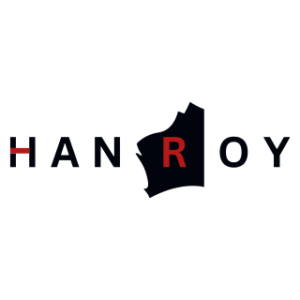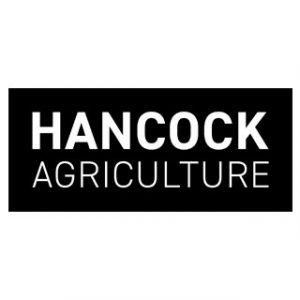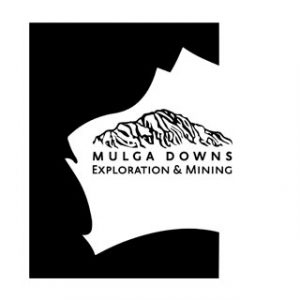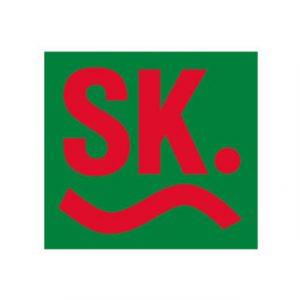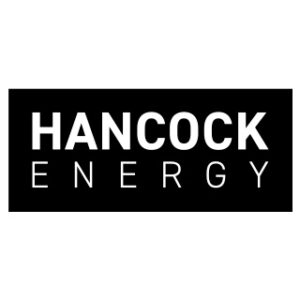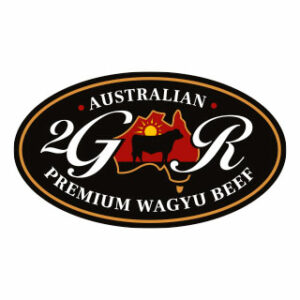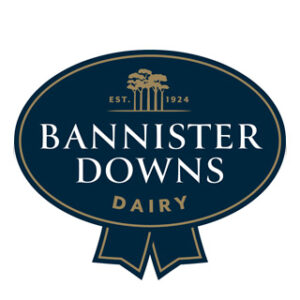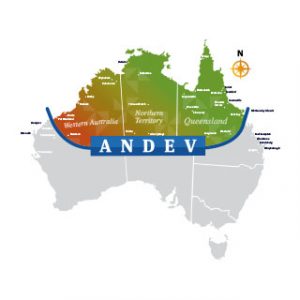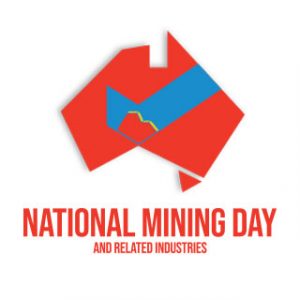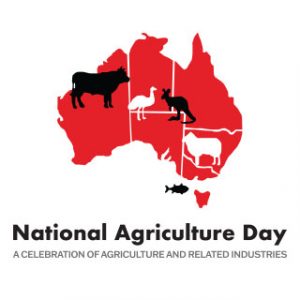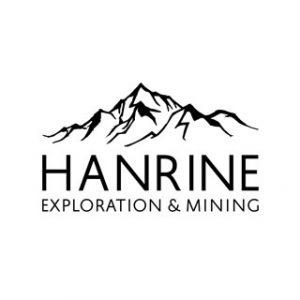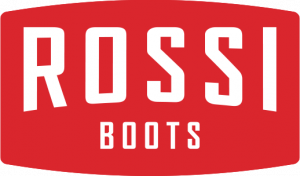From iron ore to tender beef
WATCH: www.youtube.com/watch?v=fv3zkwsYAGM
Good afternoon Bails Myer, distinguished guests and friends,
I am delighted to be speaking at your special event at your historic and beautiful property.
I’m sorry I can’t be with you Bails and your friends personally but send my greetings from New York.
Yulgilbar is indeed historic. It was Sam Hordern, previous owner of Yulgilbar, who helped to first introduce the great Santa Gertrudis breed to Australia, bringing them from America. I also hear that Yulgilbar’s Santa Gertrudis stud is the third oldest in Australia and the largest in New South Wales. Congratulations to Sarah, Bails and the Myer family and best wishes to the Yulgilbar team.
From shares in properties to then one then two properties, spreading from the Pilbara and dating back to the second half of the 1800’s, our family too has a continuous history in the cattle business. I loved my early life growing up on our then two stations in the then remote still rugged and hot Pilbara, goodness have we seen changes since I used to scramble up windmills with tools for my father!
Line to appear on screen only (not spoken):
Like many of you here today, we have a long history in the cattle industry, and now have over 20 properties in our portfolio, including both Hancock and the recently acquired Kidman stations the latter in which we have majority interests. We’re across states from West Australia to Queensland, and with farms in NSW.
Today, I should to talk to you about the crucial factors of keeping internationally cost competitive, given Australia must export large percentages of its agricultural production.
Factors deterring investment in Australian agriculture, the escalation of government red tape, the need for investment in stations and where appropriate, farms, to add practical agritech so that Australia’s agricultural sector can prosper into the future, and be able to supply the growing needs of our Asian neighbours, as well as ourselves.
Line to appear on screen only (not spoken):
All of these factors play an important role in determining the future and success of our industry.
The huge opportunity presented by Asia
As you may be aware, Australia currently needs to export two thirds of our beef. So for our cattle industry to grow we need to keep internationally cost competitive and develop more overseas markets, and similarly for other sectors of our agricultural industries. We need to listen to what our customer wants, including fresh beef and offal.
Accordingly, we confirmed recently that Hancock has entered into a strategic co‐operation agreement with Aozhou for the supply of beef cattle to China. Aozhou, is an entity jointly formed by Sino‐Australia Modern Industry Park, New Hope Group, Zhejiang Seaport Group and Harvest Fund to develop a cattle receiving and processing facility on Jintang Island, China.
Jintang Island is located off the coast of Ningbo, in China’s warmer south and greater Shanghai area, and has a population of more than 200 million people within a 200km radius of the island, a huge growth opportunity for Australian agriculture. The Jintang Island facility will have a capacity of 150,000 head per annum, with the potential to expand that capacity to up to 300,000 head per annum in the future, and potentially more as growth allows.
Line to appear on screen only (not spoken):
Importantly for northern Australia, effected by blue tongue, the island effectively quarantines such cattle, which would form an important breakthrough in getting northern exports into China. Australia has tried unsuccessfully for years to get through this blue tongue barrier.
Australians demand access to fresh beef, that is, we want fresh meat in our butchers or supermarkets. We go to the shops every few days to buy our steak, sausages, mince, beef cheeks, liver and delicious Aussie roast meats. We might cook it that night or the next couple of nights, but primarily chose to buy it fresh.
We in turn need to listen to our customers wanting fresh beef and offal.
Line to appear on screen only (not spoken):
It’s important to note that increasing cattle exports will not only benefit the pastoralists and farmers through the ability to sell more of their product, but consequently for them to employ more people, and invest more in their stations, plus , benefit many of the related industries such as transporters, port workers, agents, and the list continues.
Put simply, the more markets there are, the more opportunities for Australian pastoralists and farmers, the more cattle we can produce, the more jobs onAustralian properties. More cattle exports from Australia means more money flowing back into our country, more money to reinvest.
If we in Australia choose not to listen to our markets in terms of what beef products they want, the demand will not disappear, in fact, we run the risk of having other countries such as the US and Brazil take our place meeting the markets needs. This would be an all-round negative for Australia resulting in less money, export revenue, taxation revenue, jobs and opportunities for Australia and our hard-working cattle industry.
As Asia grows, Australia will grow, provided we listen to our markets and our governments understand the need to make our country attractive to investment and significantly lessen their red tape and taxation burdens on businesses, to enable Australian agriculture to be internationally cost competitive. By 2050, Asia’s middle class alone is forecast to grow to over three billion people – that’s three billion people right on our doorstep, who will increase demand for protein, goods and services. We are blessed to be located close to some of the world’s biggest and fastest growing economies.
Line to appear on screen only (not spoken):
In agriculture, the economic opportunities for Australia are extensive, and with our natural endowments of clean air, clean water and extensive lands, together with increased usage of innovative practical technologies, we could be well placed as a country on the global stage to supply both ourselves and our Asian neighbours, providing we welcome investment and maintain or achieve international cost competitiveness.
Investment in agritech essential to growing agriculture
Across all of our stations, we are undergoing a technology transformation. We have introduced this technology to our Hancock stations successfully, and are now, with the support of our minority partners, rolling this out across Kidman too.
We are rolling out the digitalised UHF system, walk-over weighing systems and solar pumps, as well as hydraulic lifts, improved hydraulic weaner cradles with head supports, plus additional water facilities and more.
The digitalised UHF system enables clear and quick and widespread communication from anywhere on the property to anywhere in Australia or overseas, through the use of a handheld device. It is currently used in the mining industry and by our defence forces.
The digitalised UHF devices enable private and group phone calls, text messages, brief emails and can transmit emergency notices so they can be responded to quickly throughout the station, improving staff safety, and enabling greater efficiency for managers.
Lines to appear on screen only (not spoken):
The digitalised devices mean that a station manager inspecting cattle at the far-most point of say Ruby Plains station in northern outback Australia, can in a few seconds, speak directly with his station staff, Kidman’s head office over 2,500 kilometres away in Adelaide or a customer in Tokyo over 6,000 kilometres away.
The digital UHF system also has advanced GPS technology ensuring alerts are sounded when nearing the properties border, tracking daily routes of staff, even recording the speed they are driving.
Another major technology we are rolling out is walk-over weighing, an innovative selfmustering technology which improves animal welfare through reducing the need for mustering or re-mustering cattle, leaving the cattle more relaxed and able to eat and drink when they need.
For those who don’t know, walk-over scales are fitted near a water point and record the weight of the cattle that walk over it.
The weight of each animal will indicate the most appropriate destination for it, and a corresponding gate will open leading it into a paddock if underweight or leave the cow in the yards if ready for market.
Line to appear on screen only (not spoken):
Cattle that are pregnant can be monitored and guided into a preferred paddock. High performance breeding stock, a cow that rebreeds within a 12 month cycle, can be more easily identified.
Running on solar power, this cutting-edge self-mustering technology will assist our stations with management of cattle in the paddocks where introduced, eliminating guess work and repeat musterings for timely marketing and give better ability to predict when trucks will be required to send cattle to market.
Line to appear on screen only (not spoken):
In addition walk-over weighing provides a safer way for cattle to be mustered, with less maintenance for vehicles and less fuel expense.
Solar pumps are also very important especially in our north, making critical daily water more reliable for our cattle, and saving the risk for station employees of climbing windmills, which I remember so well from my childhood!
A technology we plan to adapt from our usage in the mining sector is the use of drones.
Drones are able to observe, photograph and film in real-time and high-resolution, things such as dam and river levels, fences, fires, floods, cattle movements, station and other operations .They are also able to monitor tanks, troughs, priority gateways, lick supplement checks, fence lines and the pasture.
Line to appear on screen only (not spoken):
Representing one of the largest commercial trials for drones in agriculture, we recently completed testing of drones on our Kimberley stations and after CASA licences obtained, we will roll this technology out across all of our stations, hopefully commencing this year.
The two types of drones we trailed and are rolling out include a beyond the line of sight UAV and a multi-rotor helicopter style drone.
The beyond the line of sight drone, as its name implies, is able to fly beyond a human’s visual line of sight, enabling it to reach the far most corners of a station, with its multispectral cameras.
Line to appear on screen only (not spoken):
This drone is able to travel a distance of approx. 40 kilometres from the base station and cruise at a speed of 60 kilometres per hour.
It is also able to able to carry and transport by air items weighing up to four kilograms, allowing for items such as tools, emergency supplies and medical needs such as epi-pens to be quickly and easily transported around the station.
Line to appear on screen only (not spoken):
Have you ever been in the situation where your technology is in low battery and you don’t know if it will last when you need it to? Well this drone will automatically return to its home base when its battery voltage is low. It will also return to its home station if the telemetry link is broken, that is link between the drone and the operator, even auto-landing itself!
The multi-rotor drone we also trailed has many of the same features, though travelling less distance and less fast, and is able to conduct many of the same tasks, but is capable of carrying more, up to six kilograms.
More research is needed into optimum grain feeding for different types of cattle and optimum aging, whether more aging, be that wet or dry, could lessen the time and expense of expensive grain feeding. Better treatments to lessen stock pain, and make cattle births more safe, studies to support the expense of shading in parts of birthing paddocks and elsewhere, to encourage stations and Farms in hot areas to do more shading.
Line to appear on screen only (not spoken):
We at Hancock are already adding shading to stockyards, wow facilities, holding pens, water troughs and birthing paddocks, and rolling this out to Kidman too for their northern stations, as I believe this is not only clearly better for cattle, but will also in future be supported with positive results.
At Bannister Downs, our ethical dairy partnership in Northcliffe, West Australia, we are leading the way with our innovative and high-tech practises. Bannister’s soon-to-becompleted new ‘Creamery’ facility will be open to the public and will see cows milked on a voluntary basis in a robotic system designed to minimise herd stress and maximise cow comfort, a first in West Australia.
Line to appear on screen only (not spoken):
Along with other investments at Bannister, this will allow us to significantly increase our production rate, allowing us to sell more locally, and also export greater quantities of our premium milk and cream.
However, this is only part of the story, what can’t be overlooked is government, in particular its red tape, compliance and other time consuming and expensive burdens, discouraging the investment agriculture needs to stay competitive in Australia, and consequently limiting the dollars available for investment in advanced technology for stations and farms.
Australia lagging well behind in cattle numbers
Let us look at some examples. To illustrate just how much our cattle industry is lagging behind others, such as Brazil.
Or, to put it another way, what an exciting future our agricultural industry could have with smaller government and less red tape! Both Brazil and Australia are the largest two countries in the Southern Hemisphere with similar land masses – Australia at 7.69 million square kilometres, and Brazil just a little larger.
Line to appear on screen only (not spoken):
Both are leading economies in their regions and both experience similar climatic conditions in many parts of their countries.
Please ask yourself, how many head of beef cattle does Brazil have?
And, how many head of cattle do you think Australia has? The answer is astonishing.
Approximately, Brazil currently has more than 210 million head of beef cattle, compared to Australia’s approximately 23 million, declining in recent years.
That’s right – Brazil, a country with a similar land mass has a cattle industry nearly 10 times bigger than Australia’s! Let’s look at a further comparison, that between West Australia and Queensland.
Queensland, in long-serving former Premier Sir Joh Bjelke-Petersen’s time, welcomed investment and business and a thriving cattle industry was built up.
Today, according to Meat and Livestock Australia’s 2015 figures, Queensland has a herd size of approximately 11.3 million.
And what about West Australia, with its much larger land area, would you think we’d have more cattle than Queensland? Well regrettably we don’t, indeed we have far less, despite our much larger land area, a tiny approximately 2.4 million cattle.
Line to appear on screen only (not spoken):
Unfortunately, for us in WA, we have lots of government tape that seriously hampers our cattle industry.
Government impediments to developing our agricultural industry
Take just one example of government regulation in West Australia that acts to prevent our industry from developing.
Many of you would know of the Fitzroy River in the Kimberley’s in West Australia. Across the average wet season, approximately 7,000 gigalitres of water is wasted as it uselessly flows into the ocean.
Now, 7,000 gigalitres of water can be hard to put into perspective but think of it this way, every year 14 times the amount of water in the huge Sydney Harbour flows through the Fitzroy, past many stations, out unused into the ocean.
As it stands in 2017, the government only allows one water licence to access water from the Fitzroy River.
Line to appear on screen only (not spoken):
And, guess how much water the government permits to be taken?
Six gigalitres. This leaves approximately 99.9991% of the water to run out uselessly into the Indian Ocean.
We all know that water is absolutely essential for cattle and to grow cattle numbers.
Line to appear on screen only (not spoken):
We can’t raise cattle without good water supplies, and we sure can’t match Brazil without increasing water supplies!
Another reason why utilising fresh, clean water from the Fitzroy River and other flowing rivers is a good idea is that it would be better for cattle.
Stagnant unfenced Dam water, which cattle often drink, can be dirty and contaminated containing diseases such as E. coli and giardia, causing illness and deaths.
According to American and Canadian research, cattle could also put on between 15 and 28 per cent more weight over a year just by drinking clean water.
Line to appear on screen only (not spoken):
Allowing access to water from the Fitzroy would not only be a win for pastoralists, but also a win for the animals as they would be drinking cleaner, healthier water.
In short, if the government allowed us to tap into this and other huge wasted good water sources we would be able to increase our cattle numbers and just imagine the benefit to all the related industries that depend upon agriculture.
Line to appear on screen only (not spoken):
It is too often forgotten that it’s not just stations and farms that would benefit from water and less red tape to let them grow, but the myriad of other industries, through suppliers, such as tanks, troughs, hydraulic crushers, plus truckers, even accountants, and many more who would grow along with an increasing agricultural industry.
I’m not the only one pointing out that red tape and inefficient bureaucracy is negatively affecting our industry, scaring off investment.
Line to appear on screen only (not spoken):
The Kimberly Pilbara Cattleman’s Association, in a recent submission to a Senate red tape committee, outlined some real examples of red tape getting in the way of progress in our agricultural industry and warned that investment in WA worth at least $500 million is at risk because of this.
That cattleman’s association highlighted one family-owned station in the Kimberley’s who encountered significant road blocks when trying to install a pivot on their station which represented well less than 1 per cent of their stations land mass. The submission said:
“In order to put in a pivot, the Department of Environmental Regulation announced they had to complete a flora and fauna survey. The (family) waited over 6 months for a response to their application and were then referred back and forward between Department of Environmental Regulation and Department of Parks and Wildlife for no less than 2 years now.”
Line to appear on screen only (not spoken):
“The … family received from the Department of Environmental Regulation correspondence requiring them to complete a Flora and Fauna Survey within 28 days from the date of their letter. This is an impossible feat living in remote Australia. …
In order to perform an accurate Flora and Fauna Survey, certain plants need to be flowering to accurately recognise and count them. They were told they must look for a plant with a purple flower but this plant wasn’t flowering during the time requested for the Survey.”
I could quote other nonsensical red tape examples from the Kimberly Pilbara Cattleman’s Association report but unfortunately, time does not permit me to.
I would also like to share a true story with you though, told directly to me, by wonderful people who had lived and worked on cattle stations for about 50 years. They were selling their beloved station, and they commented to me why they were selling, they said, it’s not the heat that lasts many months of the year, the isolation, the floods, the fires, the snakes, the wet and its damage, even the droughts or earthquakes, but the government red tape.
They would spend long days on station tasks and responsibilities, only to have to work night after night on government paperwork, including restricting things they wanted to do to improve their station, increasing critical water and increasing the small extent of pasture under introduced feed, which had performed very successfully on trial. They worked more than a thousand miles from Perth and could not afford a Perth office to handle the government paperwork for them. Indeed what they did spend on government tape, actually worked against them from investing in better safety they dearly wanted to achieve, such as a new plane for the manager, theirs was decades old, and lighting for their runway, so that the flying doctor could land at night for emergencies.
Line to appear on screen only (not spoken):
In short, too little is understood by our governments of the damage their tape is doing, to productive investment, safety and adding to costs and delays.
While Australia lags behind, other countries such as the United States and India are leading the way with red tape reduction.
President Trump is taking meaningful and important steps to reduce government red tape across many industries, including those that affect the American agricultural sector.
Line to appear on screen only (not spoken):
As President Trump said recently while in Europe: “The West became great not because of paperwork and regulations but because people were allowed to chase their dreams and pursue their destinies.”
Prime Minister Modi is also taking similar action in India tackling India’s notorious bureaucracy where, recently for example, he has reduced the time it takes to incorporate a company from two to three months to just 24 hours. Line to appear on screen only (not spoken): “If a young person wishes to start his work through a start-up, then he can register the company in a day.”
Prime Minister Modi has slashed governmental environmental restrictions on water, government tape that although burdensome, and possibly well meaning, did little to assist India’s water problems. If this can be done in India, by dedicated leadership, which has been saddled with British, USSR and Indian government tape, some of the most notorious in the world, why can’t we do this in Australia, with leaders who recognise the importance of this for our cost competitiveness, for creating jobs and raising living standards and for encouraging the investment Australia needs?
While India has cut government tape and doubled its economic growth, and become the leading large economy in terms of economic growth, raising the living standards of its people and enabling opportunities for their future, Australia is still struggling with excessive government tape, record debt, investment percentage down to less than anti-business, antiinvestment Socialist Whitlam government times, what do you think this is doing to Australia’s future and future jobs?
Lines to appear on screen only (not spoken):
We need to learn from President Trump and Prime Minister Modi in removing costly and burdensome red tape to allow our economy, and importantly, our agricultural industry to invest and thrive.
For our agricultural industry to continue to be a success, we must seize the opportunity for new and growing markets that Asia provides, and continually raise with our governments to make the necessary reforms to allow our industry to invest and grow, and we must continue to pursue research and practical agritech.
I hope that those of you in the audience and your families on the land will join us to celebrate Australia’s inaugural National Agriculture and Related Industries day in Canberra on November 21.
This inaugural annual day is an initiative I founded, is being conducted with assistance from the Pastoral and Graziers Association of West Australia, the Northern Territory Cattleman’s Association and other rural organisations, and aims to recognise the importance of one of Australia’s most important industries.
I hope you have a wonderful field day.
Thank you.
ENDS


